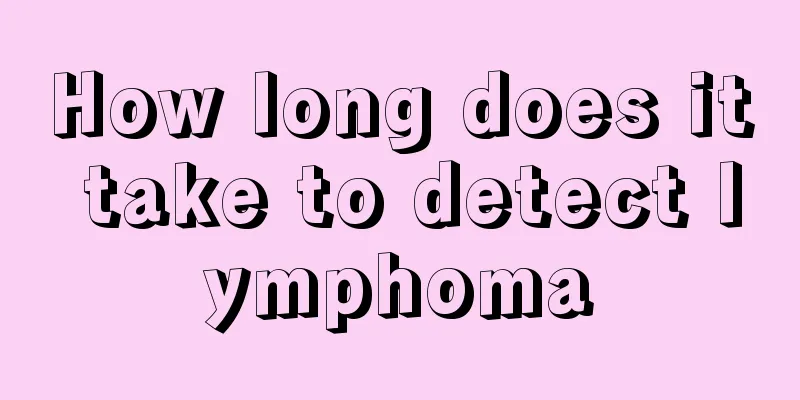How long does it take to detect lymphoma

|
Cancer is a disease that is difficult to cure at present. There are many types of cancer clinically, but no matter what kind of malignant tumor it is, the earlier it is treated, the higher the cure rate. Today, I will focus on explaining the disease of lymphoma. Many people may not know much about the examination method of lymphoma. How long does it take to detect lymphoma? Experts suggest that the question of "how long does it take to detect lymphoma" is related to many factors. For example, different detection methods require different amounts of time, which is also related to the hospital chosen by the patient. The following experts will introduce to you the general examination items for lymphoma. 1. Routine blood test and blood smear Routine blood tests are generally normal and may be combined with anemia of chronic disease; HL may show an increase in PLT, WBC, and eosinophilia; aggressive NHL invading the bone marrow may cause anemia, a decrease in WBC and PLT, and lymphoma cells may appear in the peripheral blood. 2. Bone marrow smear and biopsy HL rarely involves the bone marrow. NHL invades the bone marrow, and lymphoma cells can be seen in bone marrow smears. The cells are large, rich in chromatin, gray-blue, and obviously abnormal in morphology, with a "tailing phenomenon"; lymphoma cells ≥ 20% are lymphoma leukemia; bone marrow biopsy can show lymphoma cell aggregation and infiltration. Some patients have increased hemophagocytosis and hemophagocytosis in bone marrow smears, which are more common in T-cell NHL. 3. Blood biochemistry Increased LDH is related to tumor burden and is an indicator of poor prognosis. HL may be accompanied by increased ESR and ALP. 4. Cerebrospinal fluid examination Patients with moderately to highly aggressive NHL clinical stage III/IV may have central nervous system involvement or central nervous system symptoms and require cerebrospinal fluid examination, which is manifested by increased cerebrospinal fluid pressure, increased biochemical protein, and increased number of conventional cells, mainly mononuclear cells. Lymphoma cells may be found in pathological examination or flow cytometry. If you are unfortunately diagnosed with lymphoma, don't give up treatment just because it is difficult to cure. Clinically, if lymphoma is discovered in time and treated in a professional hospital as soon as possible, it can effectively curb the spread of cancer cells. Therefore, patients must have the determination to defeat lymphoma. |
<<: Can lymphoma be detected by blood test
>>: How to check lymphoma in children
Recommend
Can pearl powder remove acne? How to remove it?
Acne is a symptom that is annoying to everyone. A...
What are the screenings for cervical cancer
What are the methods for checking cervical cancer...
What are the early symptoms of osteosarcoma
Osteosarcoma is a tumor disease that is extremely...
What to eat during chemotherapy for lung cancer? Choose according to the patient's symptoms
During chemotherapy for lung cancer, sufficient n...
Tips on how to deal with oily hair
Many female friends often have oily hair. Even if...
How to scrape the belly
With the improvement of living standards, compute...
The most authentic and detailed sharing of medication for teratoma
Once a teratoma is diagnosed, early surgical rese...
Bronchial mucosal inflammation
Bronchitis is also a tracheal disease that tormen...
What are the symptoms of bone dislocation?
Bone dislocation is mainly caused by trauma or so...
Why is my face thin and my body fat
Many people have the problem of having a thin fac...
How to use disposable face towel
How to use disposable face towels? This question ...
What diseases can excessive stress lead to?
If any part of the stress is too great, it will c...
3 food therapies to fight colon cancer
If you suffer from colon cancer, in addition to t...
The stool is very hard and there is blood in it. What's going on?
If your stool is hard and always accompanied by b...
People should know more about the specific symptoms of bladder cancer
Bladder cancer is a type of tumor with a relative...









